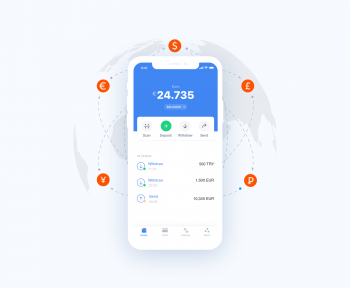Exploring the realm of finance can sometimes feel like embarking on a journey, through territories. Whether you’re an expatriate handling mortgage payments from another country, a freelancer receiving payments from clients or a small business owner involved in importing goods the process can be quite intricate.
A key element in ensuring these transactions go smoothly is an insignificant yet vital detail—the SWIFT code. Understanding and verifying this code is comparable to checking the forecast before setting sail—it’s crucial for a voyage. Today lets demystify the concept of SWIFT codes: what they represent, how they. Importantly how to validate them to prevent common errors that could disrupt your financial arrangements.
What is a SWIFT Code?
Often known as a BIC (Bank Identifier Code) well a SWIFT code is an alphanumeric combination that uniquely identifies banks worldwide enabling them to efficiently and securely send and receive funds across borders. This code acts as your guide directing your money towards its designated destination, amidst the landscape of international banking.
The History of the SWIFT Code
The beginning of the SWIFT system, in the 1970s was a development in the field of finance. SWIFT, which stands for Society for Worldwide Interbank Financial Telecommunication was founded by 239 banks from 15 countries with a goal; to tackle the inefficiencies and security risks associated with border financial transactions. Before SWIFT financial communications relied on Telex, an error prone system lacking standardization. The creators of SWIFT aimed to establish a efficient platform to manage the growing complexity of international financial dealings.
The initial hurdles were significant involving the creation of a communication protocol accepted worldwide and the establishment of a network capable of processing detailed financial data effectively. The outcome was a society providing banks with an standardized channel for transmitting transaction information.
Over time SWIFT has not grown in scale. Has also witnessed substantial technological advancements and service expansions. Starting from its role, in handling payment instructions it has diversified to offer an array of financial services encompassing trade services treasury functions and securities transactions.
Today SWIFT connects than 11,000 institutions across, over 200 countries and handles millions of messages on a daily basis.
The development of SWIFT has been characterized by advancements. During the 1990s SWIFT integrated the Internet into its core strategy significantly boosting the systems efficiency and accessibility. The introduction of SWIFTNet in the 2000s a messaging service based on IP technology further improved the reliability and security of communications. This upgrade enabled real time message processing. Introduced services such as SWIFTNet FileAct and SWIFTNet InterAct facilitating more intricate transaction types and richer data exchanges.
SWIFT Code Structure
The SWIFT code comprises either 8 or 11 characters with each part offering details, about the banks identity and location:
- Bank Code (4 characters). These letters serve as an identifier for the banks name guiding funds to the financial institution.
- Country Code (2 letters). Similar to a countrys flag at sea these ISO letters indicate the country where the bank is situated.
- Location Code (2 characters). This mix of letters and numbers specifies the banks headquarters to latitude coordinates.
- Branch Code (3 characters). This segment of the code is optional. Identifies the branch where your funds will be directed. If no specific branch is specified, ‘XXX’ is used for the office.
The Significance of Accuracy
Picture embarking on a journey with a map: this could result in anything from a delay, to ending up on an entirely different continent. Likewise an inaccurate SWIFT code can redirect your transactions causing delays, additional fees or even leading to money being misplaced within the banking system.
Here’s how you can make sure a SWIFT code is accurate, like checking your navigation tools before embarking on a journey:
- Utilize Online Tools: Reliable online platforms allow you to enter the SWIFT code to validate its correctness and identify the bank.
- Reach Out to the Bank Directly: If unsure, contacting the bank directly for verification is the trustworthy approach.
- Confirm with the Recipient: verify the SWIFT code with the recipient of funds as a yet efficient method to avoid transaction errors.
The SWIFT/BIC System’s Purpose and Significance
The creation of the Society, for Worldwide Interbank Financial Telecommunication (SWIFT) aimed to simplify and safeguard the payment process. This system not eases fund transfers. Also ensures vital transaction details are shared among banks across 200 countries and 11,000 institutions. Through an approach SWIFT minimizes errors enhancing the speed and reliability of payments.
Understanding IBAN in Global Transactions
Apart from the SWIFT/BIC code international transactions often necessitate an International Bank Account Number (IBAN). This unique identifier specifies the account involved in the transfer crucial for transactions within Europe and other participating nations. Proficiency in both the SWIFT code and IBAN is fundamental for individuals engaged in finance.
Security Measures of SWIFT/BIC Codes
The security of SWIFT/BIC codes lies in their precision and standardized structure which accurately pinpoint sending and receiving banks while not directly facilitating transactions. This methodology aids in error reduction. Safeguards information exchange, among banking entities.
Common Mistakes to Watch Out For with SWIFT Codes
- Typos: Given their complexity it’s easy to make mistakes when entering these codes. It’s advisable to copy and paste whenever feasible.
- Format Accuracy: Avoid including characters or spaces: ensure the format remains clear and accurate.
- Updated Codes: Banks may update their codes periodically so its crucial to ensure that the SWIFT code is current and operational.
Taking a bit of time to understand and validate SWIFT codes may seem insignificant but it plays an important role in guaranteeing the success of your cross-border transactions. Just as precision matters in sailing with every knot and compass direction in the realm of finance the accuracy of a SWIFT code can determine how smoothly your funds navigate through the web of international banks. The time you prepare for a transfer double check that your SWIFT code is accurate is a simple step that can help you avoid unnecessary complications, along the way.



